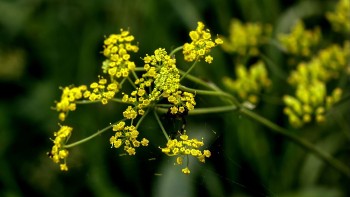Be Aware of Wild Parsnips
Jul 15, 2020

Shannon Bode, Environmental Health & Safety Manager
Wild parsnip (Pastinaca sativa), a non-native plant, was first discovered in Minnesota in the 1990s. While this plant causes a range of impacts to the environment, the largest concern from this invading species is its ability to inflict burns to skin of people that come into contact with the sap from the plant.
Avoid skin contact with the toxic sap of the plan by wearing gloves, long sleeves and long pants. When the juice of the wild parsnip comes in contact with skin in the presence of sunlight it can cause a chemical burn which can look like a rash with blistering and discoloration of the skin.

If you become in contact with the plant immediately brush off and wash with soap and water.
To relieve symptoms:
Wild parsnip (Pastinaca sativa), a non-native plant, was first discovered in Minnesota in the 1990s. While this plant causes a range of impacts to the environment, the largest concern from this invading species is its ability to inflict burns to skin of people that come into contact with the sap from the plant.
- The weed can be found in road ditches, fields, along bike trails and in prairie areas and is becoming more prevalent. Many people don't realize they are encountering it until burns, blisters, and welts later develop.
- Also, known as poison parsnip, the plant looks like a dill plant or Queen Anne's lace. It is yellow and grows about four feet tall. Some report encountering it after mowing ditches.
- In some humans, it can cause pain for weeks and scars for years due to the chemicals in the juice of the poison.
- Your pets can have reactions from the plant as well.
Avoid skin contact with the toxic sap of the plan by wearing gloves, long sleeves and long pants. When the juice of the wild parsnip comes in contact with skin in the presence of sunlight it can cause a chemical burn which can look like a rash with blistering and discoloration of the skin.

If you become in contact with the plant immediately brush off and wash with soap and water.
To relieve symptoms:
- Cover affected area with a cool, wet cloth.
- If blisters appear, try not to rupture blisters as long as possible.
- To avoid infection, keep area clean and apply antiseptic cream.
